 This Hollywood-savvy item appeared in the December 1932 issue of Vanity Fair, “…although a German director [he] is now claimed by America. His gay and cynic touch, his dramatic use of detail, have reconditioned many an otherwise anemic script and saved it from the shelf – until at one time the studio wise-crack of the hour was always, “For God’s sake, send for Lubitsch.”
This Hollywood-savvy item appeared in the December 1932 issue of Vanity Fair, “…although a German director [he] is now claimed by America. His gay and cynic touch, his dramatic use of detail, have reconditioned many an otherwise anemic script and saved it from the shelf – until at one time the studio wise-crack of the hour was always, “For God’s sake, send for Lubitsch.”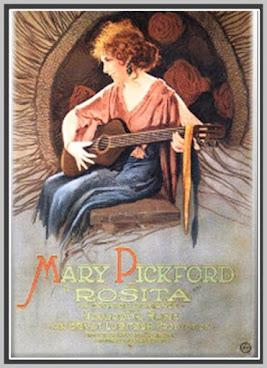 Hollywood first sent for Ernst Lubitsch ten years earlier when, in 1922, Mary Pickford, impressed with his German films and by then dismissive of American directors, offered him the opportunity to direct her in a film she hoped would facilitate her transition from ingenue to mature roles as well as allow her to prove her depth as an actress. The film was Rosita (1923), an operatic period piece about a gypsy girl (Pickford) who attracts the amorous attentions of a king. The film was successful enough that Lubitsch, who saw great career promise in Hollywood, was able to settle there, making him one of the first European directors to decamp to the film capital. Lubitsch didn’t work with Pickford again but soon entered into a sweet deal with Warner Bros. that assured him great freedom as a filmmaker. He was able to select his own projects, retain his own production staff, work only with writers with whom he wished to collaborate, and shoot and cut his films with minimal oversight.Lubitsch would go on to make less epic, more intimate fare, eventually producing and directing a string of witty and urbane films, primarily for Paramount and MGM but also for others, that made his name as one of the great directors of Hollywood’s classic era.
Hollywood first sent for Ernst Lubitsch ten years earlier when, in 1922, Mary Pickford, impressed with his German films and by then dismissive of American directors, offered him the opportunity to direct her in a film she hoped would facilitate her transition from ingenue to mature roles as well as allow her to prove her depth as an actress. The film was Rosita (1923), an operatic period piece about a gypsy girl (Pickford) who attracts the amorous attentions of a king. The film was successful enough that Lubitsch, who saw great career promise in Hollywood, was able to settle there, making him one of the first European directors to decamp to the film capital. Lubitsch didn’t work with Pickford again but soon entered into a sweet deal with Warner Bros. that assured him great freedom as a filmmaker. He was able to select his own projects, retain his own production staff, work only with writers with whom he wished to collaborate, and shoot and cut his films with minimal oversight.Lubitsch would go on to make less epic, more intimate fare, eventually producing and directing a string of witty and urbane films, primarily for Paramount and MGM but also for others, that made his name as one of the great directors of Hollywood’s classic era.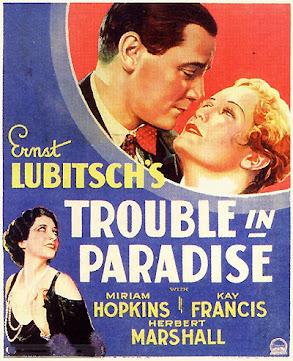 The Vanity Fair blurb appeared not long after one of Lubitsch’s early sound classics, Trouble in Paradise, was released by Paramount in October 1932. His next feature would be another cosmopolitan comedy for Paramount, Design for Living (1933). In 1934 he produced and directed the Jeannette MacDonald/Maurice Chevalier musical, The Merry Widow, for MGM and then – in a move that surprised most of Hollywood – Paramount hired him as its Chief of Production in 1935. This assignment lasted only a year and Lubitsch would hastily return to his métier with Angel (1937), an underappreciated Marlene Dietrich film. In 1939 it was on to MGM and Ninotchka and then The Shop Around the Corner in 1940. Lubitsch was now at the pinnacle of his career and a legend among his peers.
The Vanity Fair blurb appeared not long after one of Lubitsch’s early sound classics, Trouble in Paradise, was released by Paramount in October 1932. His next feature would be another cosmopolitan comedy for Paramount, Design for Living (1933). In 1934 he produced and directed the Jeannette MacDonald/Maurice Chevalier musical, The Merry Widow, for MGM and then – in a move that surprised most of Hollywood – Paramount hired him as its Chief of Production in 1935. This assignment lasted only a year and Lubitsch would hastily return to his métier with Angel (1937), an underappreciated Marlene Dietrich film. In 1939 it was on to MGM and Ninotchka and then The Shop Around the Corner in 1940. Lubitsch was now at the pinnacle of his career and a legend among his peers.Meanwhile, war raged in Europe. The political party that came to be known as the Nazis took power in Germany in January 1933 when Adolf Hitler became chancellor and within months assumed the role of dictator. When the German army invaded Poland on September 1, 1939, World War II began in Europe.
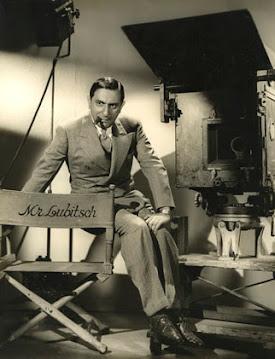 Ernst Lubitsch was Jewish. He may have emigrated from Germany to pursue a career in Hollywood, but he had also been well aware of the socioeconomic instability and political unrest in Germany at the time he left. When Hitler later became dictator, he apparently held special enmity for Lubitsch, a Jew who had had great success in Germany but departed for even greater success in the US. Perhaps this had something to do with why Lubitsch became a Nazi target. His image was used on denigrating public posters depicting degenerate “non-Aryans,” the Nazi regime banned his films starting with Design for Living in 1933, stripped him of his citizenship in 1935, and went on to use newsreel footage of him to negatively depict him in the notorious anti-Semitic propaganda film, The Eternal Jew(1940). By this time Lubitsch had been a US citizen for four years and would soon enough respond to Nazism with his audacious masterpiece, To Be or Not to Be (1942).
Ernst Lubitsch was Jewish. He may have emigrated from Germany to pursue a career in Hollywood, but he had also been well aware of the socioeconomic instability and political unrest in Germany at the time he left. When Hitler later became dictator, he apparently held special enmity for Lubitsch, a Jew who had had great success in Germany but departed for even greater success in the US. Perhaps this had something to do with why Lubitsch became a Nazi target. His image was used on denigrating public posters depicting degenerate “non-Aryans,” the Nazi regime banned his films starting with Design for Living in 1933, stripped him of his citizenship in 1935, and went on to use newsreel footage of him to negatively depict him in the notorious anti-Semitic propaganda film, The Eternal Jew(1940). By this time Lubitsch had been a US citizen for four years and would soon enough respond to Nazism with his audacious masterpiece, To Be or Not to Be (1942).
With To Be or Not to Be, Lubitsch would reveal an uncanny ability to combine diverse genres, ingeniously mixing and matching elements of political satire, bedroom farce, screwball, slapstick and espionage thriller. The film opens in Warsaw on the eve of the German occupation. The Theatre Polski, a troupe of Polish actors, is rehearsing its new anti-Nazi play, Gestapo. Bronski(Tom Dugan), the actor who is to play Hitler, marches into the street in costume to prove his credibility in the role of the Führer. His appearance causes a hubbub, frightening and confusing the local citizens...with one exception...
When Polish authorities insist that the incendiary play be cancelled, the group will continue on with Hamlet, featuring the theater company's star, Joseph Tura (Jack Benny), an inveterate ham, in the lead role. The fact that the troupe got as far as dress rehearsal with the cancelled play will account for its possession of Nazi uniforms the actors will later use to disguise themselves. The staging ofShakespeare's Hamlet will bring with it the line “to be or not to be,” key to a running gag involving Tura’s flirtatious wife Maria (Carole Lombard) and the young Polish pilot, Lt. Sobinski (Robert Stack), who is smitten with the actress.
The plot deepens. Following the German invasion, Lt. Sobinski discovers that a resistance leader, Professor Siletsky (Stanley Ridges), is actually a Nazi spy who is about to betray the Polish underground by turning over a list of names to the Gestapo. Before Siletsky can do this, the theater troupe lures him into a trap where he is dramatically dispatched. Joseph Tura will then impersonate the traitorin a series of tense encounters that culminate in confrontations that are resolved with - the yanking off a false beard. Maria Tura will use her formidable charm to beguile and outwit libidinous Nazis, and though she does this with amusing panache, even she faces moments of terror. Bronski will have an off-stage opportunity to again portray Hitler and in doing so will save the day – twice. Lowly bit player Greenberg (Felix Bressart) will be given a crucial role in the troupe's eventual escape plan, delivering lines he has practiced many times, Shylock’s famed speech from Shakespeare’s The Merchant of Venice, which he does in a heartfelt outpouring:
Referring to To Be or Not to Be's convoluted storyline, Francois Truffaut once declared that "...even if you've just seen it for the sixth time, I defy you to tell me the plot of To Be or Not to Be. It's impossible." There may be an element of truth in Truffaut's words, but the fact remains that the film is also a thoroughly entertaining, intelligent, brilliantly written and directed, perfectly cast tour de force. However, at the time of its release many critics were put off by To Be or Not to Be, particularly Bosley Crowther, the powerful, sometimes contemptuous critic with the New York Times. Perplexed by what he considered the film's "jangling moods and baffling humors," he wrote that it would be an understatement to call it "callous and macabre." Crowther panned the film more than once, prompting Lubitsch to pen an op-ed in reply. He wrote, "I am accused of...having violated every traditional form in mixing melodrama and comedy-satire or even farce; of endangering our war effort in treating the Nazi menace too lightly; and of exhibiting extremely bad taste in having chosen present-day Warsaw as a background for comedy." Lubitsch explained that he had intentionally moved "away from the traditional moving-picture formula" with To Be or Not to Be, " I was tired of the two established recognized recipes: drama with comedy relief and comedy with dramatic relief. I had made up my mind to make a picture with no attempt to relieve anybody from anything at any time; dramatic when the situation demands it, satire and comedy whenever it is called for. One might call it a tragical farce or a farcical tragedy - I do not care and neither do the audiences...The picture plays - and that is the only important thing..." Lubitsch would go on to defend lampooning the Nazis along with other aspects of his approach that had been critically slammed. Read the full text of his rebuttal here.
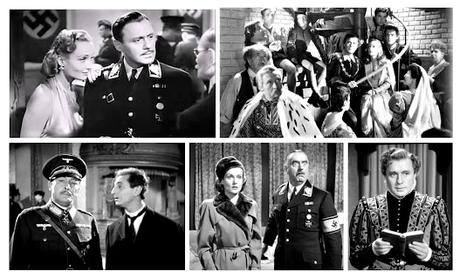
The Polski troupe: actors rehearsing, seeking shelter as bombs fall, outsmarting Nazis and...(over)acting
To Be or Not to Be would develop a reputation of having flopped at the box office. The timing of its release was terrible. It came out less than three months after the Japanese attack on Pearl Harbor triggered America's entry into World War II and only six weeks after Carole Lombard's tragic death in an air crash. As mentioned, the film received little critical support, and United Artists wrote it off not long after it opened. But in reality To Be or Not to Be would gross twice the one million dollars it cost to produce during its release. That's a moderate success, not a flop. And it would go on to earn an Oscar nomination for its score. Still, it was a film ahead of its time. Only later would Hitchcock have enormous success mixing genres (comedy/suspense thriller). Later still, Kubrick would concoct one of the blackest of all anti-war satires with Dr. Strangelove (1964). And even in the modern era To Be or Not to Be's relevance endures; in 2014 Wes Anderson cited its influence on his zany tableau, The Grand Budapest Hotel.
As sometimes happens with a true classic, time has been kind to To Be or Not to Be, now an acknowledged masterwork. Among filmmakers and film buffs, Ernst Lubitsch continues to be referenced with a phrase that was coined in his lifetime (1892 - 1947), "the Lubitsch touch." On revisiting To Be or Not to Be, Billy Wilder's thoughts on his mentor's enviable gift as a filmmaker seem apt:
"The Lubitsch touch is a light touch. But there are serious overtones in Lubitsch. He understood life..."
and
"It was the elegant use of the Superjoke. You had a joke, and you felt satisfied, and then there was one more big joke on top of it. The joke you didn't expect."
~
This is my entry for the Classic Movie Blog Association's 2021 fall blogathon, "Laughter is the Best Medicine." Click here for links to participating member blogs. And enjoy!
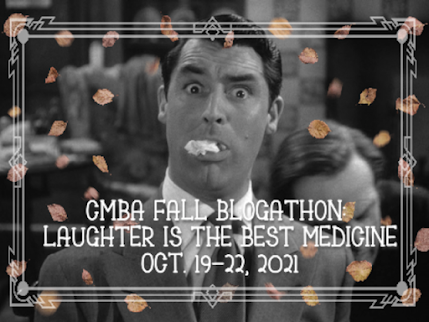
References:
How Did Lubitsch Do It? by Joseph McBride, Columbia University Press, 2018
"The Play's the Thing" by Geoffrey O'Brien for the Criterion Collection, 2013
Romantic Comedy in Hollywood, from Lubitsch to Sturges by James Harvey, Alfred A. Knopf, 1987

